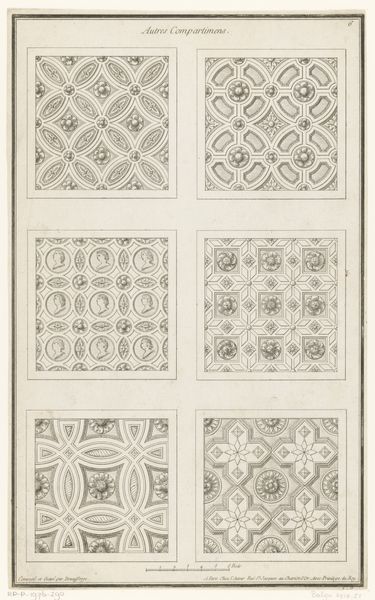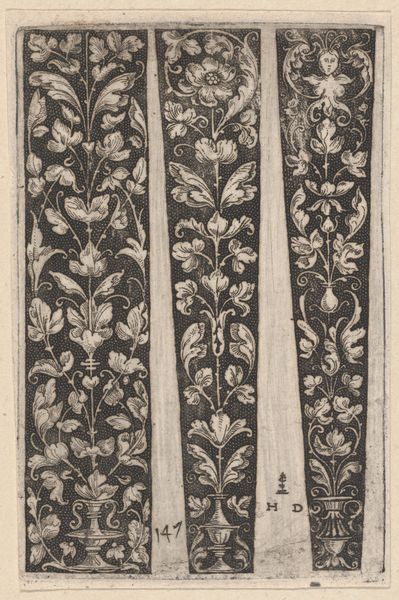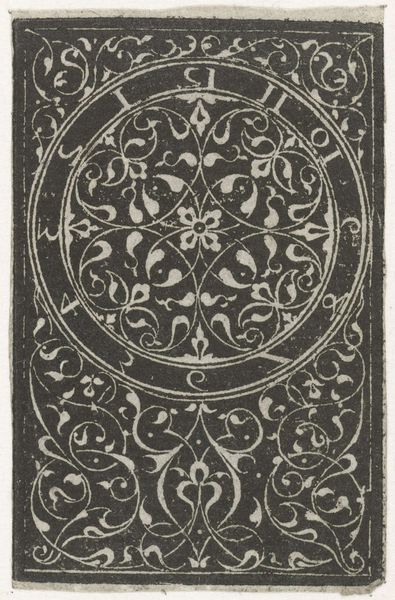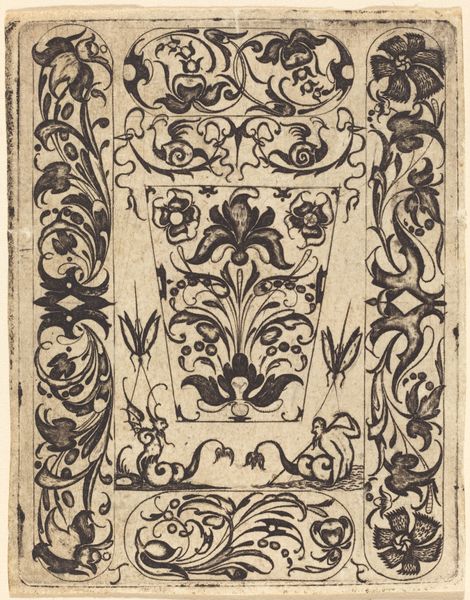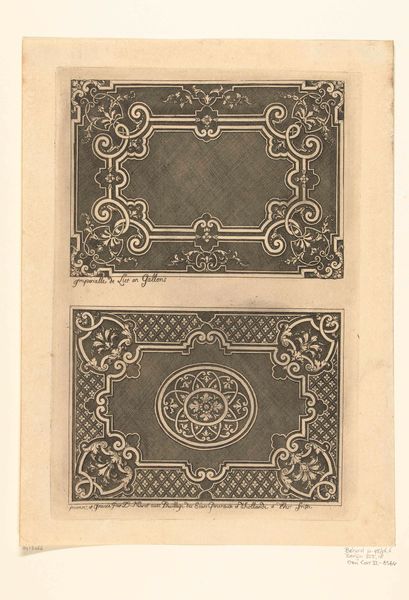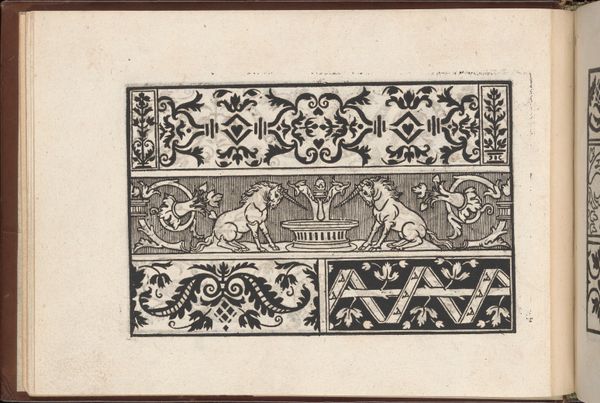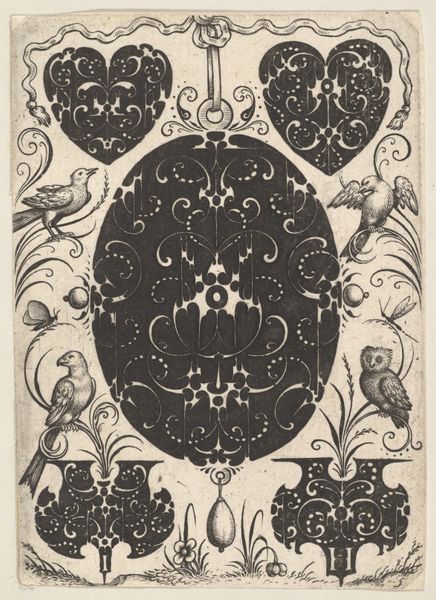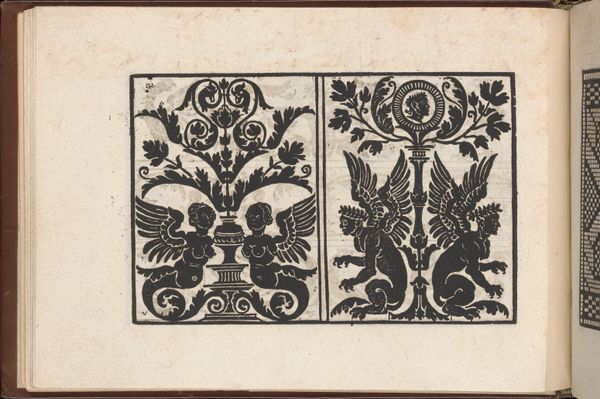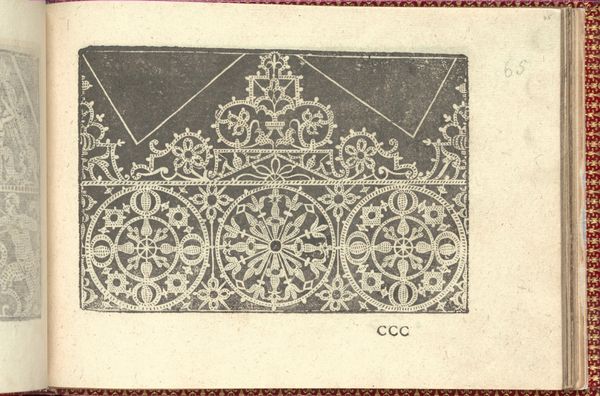
drawing, print, linocut, paper, pen
#
drawing
#
pen drawing
# print
#
linocut
#
paper
#
linocut print
#
geometric
#
pen
#
decorative-art
Dimensions: 167 × 124 mm (sheet)
Copyright: Public Domain
Curator: Immediately, I’m struck by the dynamic contrast between the intricate, almost floral patterns and the rigid borders. It gives a sense of contained chaos. Editor: Indeed. We are looking at a work titled "Ornamental Panels" by Hans Rudolf Manuel Deutsch. The medium here is particularly interesting, combining drawing with pen and printmaking techniques such as linocut, all on paper. Given the title and the medium, I would suppose that it was designed to be put in the service of something functional. Curator: The use of linocut as a method suggests a deliberate interest in reproducible design, possibly pointing towards a democratization of art. Consider how such panels could be integrated into everyday objects or architecture. How might the accessibility of this medium shift notions about artistic value? Editor: The balance is captivating, certainly. Observe how each panel mirrors the other, yet possesses subtle variations within its filigree of shapes. The dark lines create movement and depth, especially around the central floral motifs in each panel. There is this dialogue of geometry and abstraction. Curator: I agree. The combination is typical for the decorative art which implies that its social function should be regarded as critical for interpretation, which might shed some light on design origins and consumption patterns. Are we looking at design for textiles, or wallpaper perhaps? What kind of labor went into this process? How was the availability of such products impacted by social movements or emerging technologies? Editor: Your approach underlines the connection of this object to labor and value. But isn’t there value to be found simply in appreciating how these intricate patterns evoke contemplation and wonder, beyond utility or commodity? It is about form creating and expressing, isn’t it? Curator: It is precisely the form in service that shapes that expression, so the interplay is crucial to a comprehensive understanding. We must delve into who was creating it and for whom. Editor: Perhaps a further analysis of its structural elements could yield new insights into its emotional language and inherent beauty, no matter how humble its beginnings. Curator: Ultimately, it's the conversation between form and function, abstraction and social impact that makes it so compelling. Editor: It is true, it encourages an analytical view into a piece where at first glimpse, it seemed mostly pleasing in appearance.
Comments
No comments
Be the first to comment and join the conversation on the ultimate creative platform.

